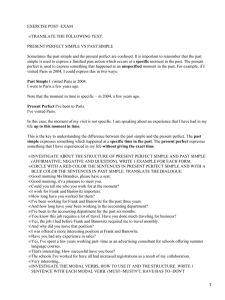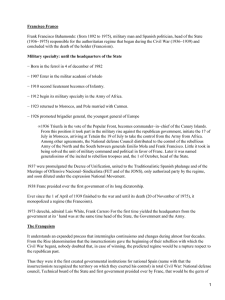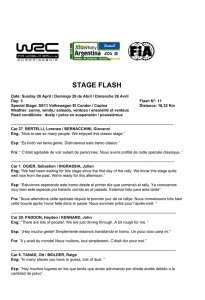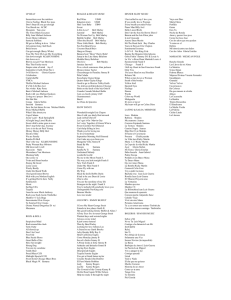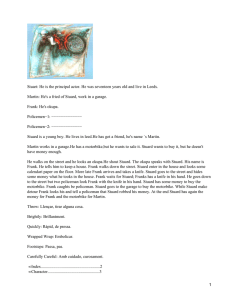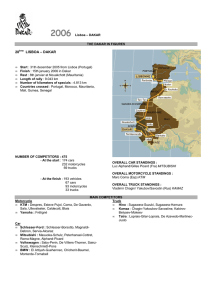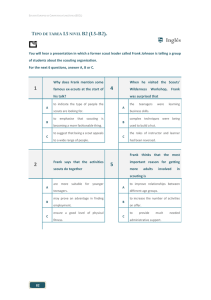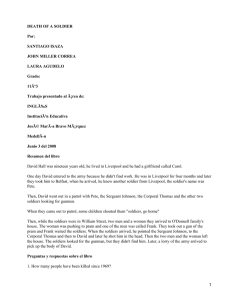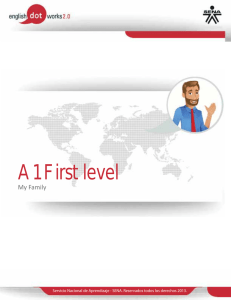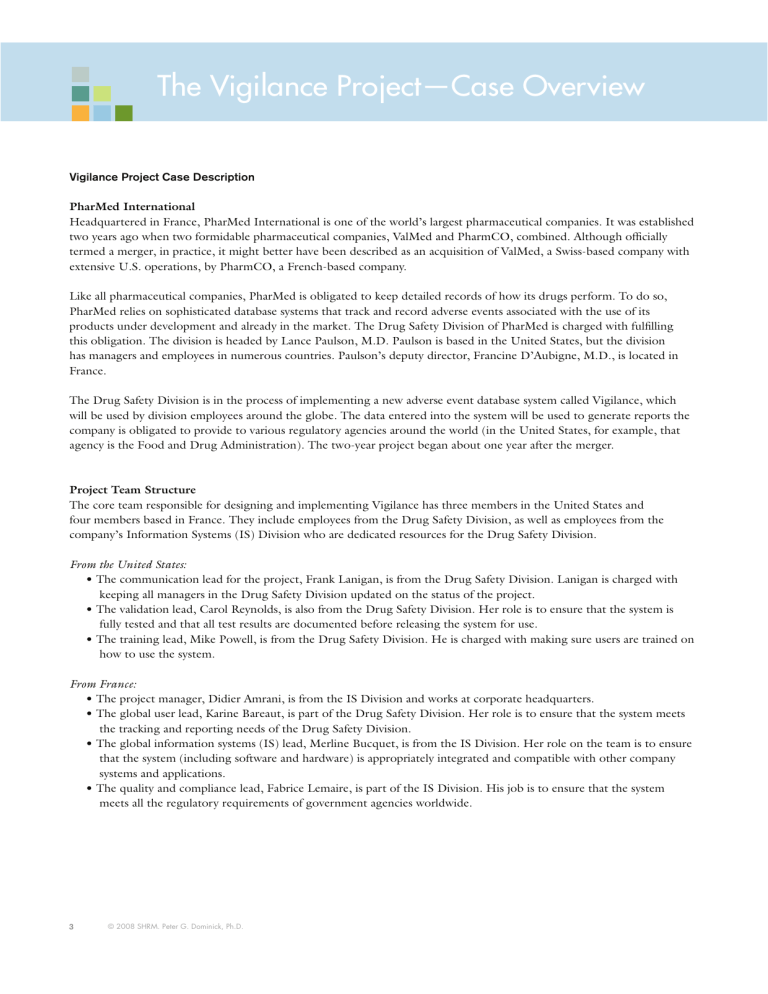
The Vigilance Project—Case Overview Vigilance Project Case Description PharMed International France. The Drug Safety Division is in the process of implementing a new adverse event database system called Vigilance, which will be used by division employees around the globe. The data entered into the system will be used to generate reports the company is obligated to provide to various regulatory agencies around the world (in the United States, for example, that agency is the Food and Drug Administration). The two-year project began about one year after the merger. Project Team Structure The core team responsible for designing and implementing Vigilance has three members in the United States and four members based in France. They include employees from the Drug Safety Division, as well as employees from the company’s Information Systems (IS) Division who are dedicated resources for the Drug Safety Division. From the United States: keeping all managers in the Drug Safety Division updated on the status of the project. fully tested and that all test results are documented before releasing the system for use. how to use the system. From France: the tracking and reporting needs of the Drug Safety Division. that the system (including software and hardware) is appropriately integrated and compatible with other company systems and applications. meets all the regulatory requirements of government agencies worldwide. 3 © 2008 SHRM. Peter G. Dominick, Ph.D. The Vigilance Project—Case Overview Each team also has two to four additional members, most of whom are involved with the project on an intermittent basis. chart on page 8 provides an overview of the Vigilance project team structure. An administration subteam, located in the U.S., is responsible for ensuring that Vigilance maintains separate databases for each product in all it strengths. For example, if a particular medicine was sold as a 10 milligram pill and also as a 20 milligram pill, Vigilance must separately track any adverse events for both size pill dosages. workflow subteam, with members evenly divided between the U.S. and France, is responsible for determining the ways in which the system automatically passes work from one user to the next. For example, a case entered into the system would A French-based migration subteam is responsible for mapping all the data from the legacy (existing) systems to Vigilance. Finally, a French-based report subteam is charged with designing the reports that will be generated from Vigilance. While each of these subteams has a different focus, they are interdependent. For instance, if the data entry subteam failed to 4 © 2008 SHRM. Peter G. Dominick, Ph.D. members were disappointed, but understood the rationale for the change in direction. As work on Vigilance began, those on Vigilance began, however, their enthusiasm waned. The Vigilance Project—Case Overview Core Team Dynamics The Vigilance core team, some of whom had worked together before, started the project by holding a one-day, face-to-face including those on the subteams. There were formal introductions to ensure everyone knew each other. The roles of the various subteams were articulated and the project timeline established. “At the time,” recalls Frank Lanigan, “the proposed schedule seemed reasonable and the subteam structure made sense to us all. Looking back, however, there was no opportunity to really get past formalities. It would have been good for the core team to have also met separately for more the core team’s subsequent interactions were conducted via weekly teleconferences. These teleconferences were frequently cancelled by Didier Amrani, the project manager, without notice and without him having sought input from the rest of the team as to whether there were issues they wanted to discuss. Didier strongly controlled the way meetings were run by restricting the kinds of information that was exchanged and the ways in which it was exchanged. In and of itself, this would not have been a problem for many of the team members. As job to monitor what occurs during team meetings. The problem with Didier’s approach, though, was that he was too autocratic to be practical.” For instance, he frequently put together an agenda for meetings without input from other team members. Further, he would allot only 10 minutes for other issues not on the agenda and only if time permitted. Early in the project’s life cycle, Frank Lanigan, the communication lead, presented a communication plan to the core team during one of their conference calls. Didier remained quiet during the presentation and offered little in the way of comments on the plan presented; however, following the meeting he called Frank, stating that nothing was to be presented at core team meetings without his prior knowledge. Frustrated and angry, Frank became more withdrawn; he felt that as a part of the core team, his discretion and expertise were being undermined. When there was discussion, many of the U.S. core team members felt their ideas were given little or no consideration. As your opinion until asked—at which point they’ll tell you what your opinion is.” At various points throughout the project, consistently responded negatively to any input based upon the previous project. In fact, it had gotten to the point where it subteams could head down different paths if the communication and coordination was not as dynamic as the work itself.” She went on to stress that too frequently, the result would be one or both teams having to rework their design—creating time delays that rippled throughout the project schedule and leading to bad feelings within the team. Instructing the subteams to communicate through the user and IS leads slowed things down. Anyone who has ever played the grapevine game knows how much gets lost when layers are added between the start and end of a communication chain.” Referring to the physical distance that separated some of the subteams, he stressed, “It’s not like we could even 5 © 2008 SHRM. Peter G. Dominick, Ph.D. The Vigilance Project—Case Overview The Core-Core Team In many instances, decisions which could have been made collaboratively by the core team were not made that way. Instead, Didier, acting unilaterally or at best in consultation with French team members, made decisions that were then was not valued and that their perspectives were not being given due consideration. need to be included in the system. Among other things, these unanticipated additions were going to affect system report generation as well as eventual training. As the team was exploring the implications of the changes, Didier stopped their discussion by declaring that the team as a whole need not be concerned. Referring to himself and his French colleagues, he said it was an issue that could be taken up by the “core-core team.” To the Americans on the team, the remark only reinforced their sense of alienation. cultural awareness workshop as part of an upcoming face-to-face status-update meeting that again would include members of both the core team and the subteams. The Americans had hoped to use the workshop as an opportunity to discuss and When Didier was asked about the change of plans, he said that top management made the decision. In subsequent discussions with some of those senior managers, however, it was discovered that they were not involved in the decision and that it had been made by Didier. The U.S. team members were disappointed that the workshop had been cancelled, but their biggest concerns had to do severely undermined what little trust and rapport remained. As the project moved past the midpoint in its life cycle, the Americans on the core team were increasingly reluctant to raise issues and participate fully in conversations. Enthusiasm for the project had all but ceased to exist, and U.S. team members even began thinking twice about providing their European colleagues with information. Tensions Spread to the Subteams but almost no one was willing to discuss them openly—least of all the Americans on the core team. “It was easy for us to see how the slippages were related to subteam communication breakdowns, but we’d been down that road so many times we didn’t know how to raise it anymore,” explained Frank Lanigan. informal communication was possible among U.S.-based subteams—we could only assume the same kinds of things might mounting stress and confusion: “Tensions had gotten to the point where people were actually storming out of meetings based in the U.S., took his concerns seriously and promised to act. “I assumed,” said Frank, “that meant Lance would work through Didier, perhaps coaching and counseling him on how to open up dialogue and communication within the core team and throughout the project overall.” 6 © 2008 SHRM. Peter G. Dominick, Ph.D. The Vigilance Project—Case Overview Vigilance project. The message was sent under his name and that of his deputy director, Francine D’Aubigne, who was located in France. Colleagues, When we launched the Vigilance project by forming the core team and subteams, we expected that all team members would collaborate to develop best practices for a new safety database system. We anticipated that this would mean building on lessons learned from past projects and processes and taking into account evolving regulatory requirements and thoughtful consideration of other best practices. We appreciate the challenges this project poses and understand the time pressures this project requires. Our success depends not just on what we know but how we work together. As team members, everyone must remain professional and open to different proposals and opinions. It is crucial that we consider ideas fairly and ultimately act in the company’s best interest. We do not expect total agreement but do expect that after candid but respectful discussion, each team member will ultimately support the team decision even if they would have preferred another approach. With these goals in mind, we are appointing Halina Ducret and Teo Reynard as subteam sponsors. As you know, both of these individuals belong to the senior management team for the division and report directly to us. When teams reach an impasse, these sponsors will provide additional conflict management mediation and decision-making authority. We expect their involvement to be the exception rather than the rule. Team members should ultimately abide by majority opinion. However, for those times when team opinion is evenly split or when the disagreement pertains to key strategic objectives, the team sponsors should be contacted so they can work with team members and other appropriate staff to finalize a course of action. Best regards, Lance & Francine The e-mail message was a surprise to Vigilance team members, and to others throughout the Drug Safety Division who deliver.” Frank, who had contacted Lance, was also surprised. “I’m glad that senior management was willing to get involved, but I’m not sure this was the solution I was looking for. I had expected that they try to work these issues from within the team. I know none of us in the U.S. were consulted on the approach outlined in the message, and as far as I know no one talked to Didier or the other core team members in France.” 7 © 2008 SHRM. Peter G. Dominick, Ph.D. The Vigilance Project—Case Overview Drug Safety Director Deputy Director Francine D’Aubigne FRA Didier Amrani FRA Frank Lanigan USA 8 Global IS Lead © 2008 SHRM. Peter G. Dominick, Ph.D. Global User Lead Validation Lead Admin IS Subteam Lead USA Admin User Subteam Lead USA Data Entry IS Subteam Lead USA Data Entry User Subteam Workflow IS Subteam Lead USA Workflow User Subteam Lead FRA Subteam Lead FRA Subteam Lead FRA Report IS Subteam Lead FRA Report User Subteam Lead FRA Training Lead Fabrice Lemaire FRA
